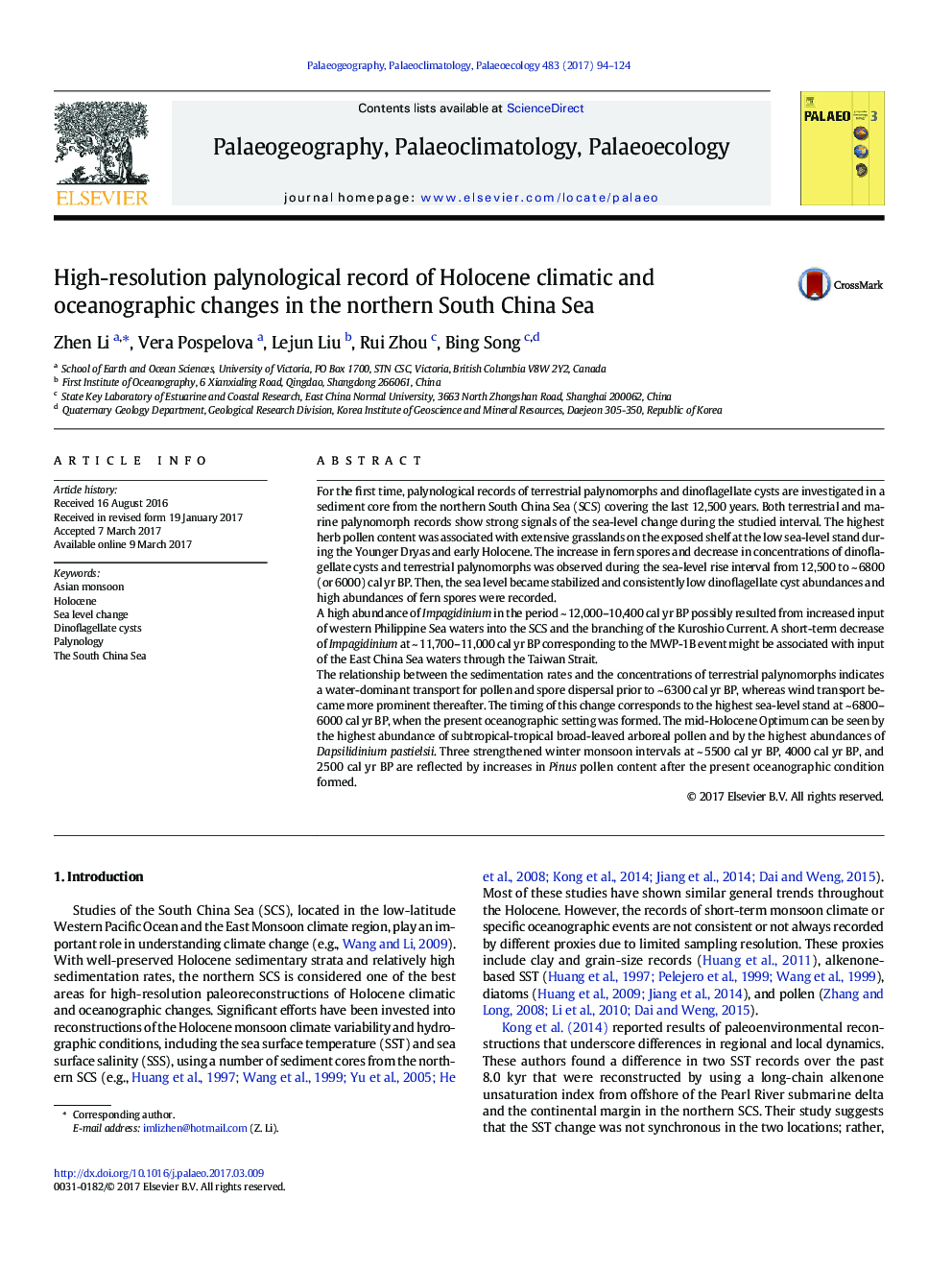| Article ID | Journal | Published Year | Pages | File Type |
|---|---|---|---|---|
| 5755645 | Palaeogeography, Palaeoclimatology, Palaeoecology | 2017 | 31 Pages |
â¢Holocene terrestrial and marine palymorphs from the SCS were investigatedâ¢Three major phases shown by palymorphs were corresponding to sea-level change.â¢Decline of Impagidinium could be associated with the Taiwan Strait opening.â¢Dapsilidinium pastielsii indicated a mid-Holocene strongest summer monsoon event.â¢Three strengthened winter monsoon events occurred after 6.0 cal kyra BP.
For the first time, palynological records of terrestrial palynomorphs and dinoflagellate cysts are investigated in a sediment core from the northern South China Sea (SCS) covering the last 12,500 years. Both terrestrial and marine palynomorph records show strong signals of the sea-level change during the studied interval. The highest herb pollen content was associated with extensive grasslands on the exposed shelf at the low sea-level stand during the Younger Dryas and early Holocene. The increase in fern spores and decrease in concentrations of dinoflagellate cysts and terrestrial palynomorphs was observed during the sea-level rise interval from 12,500 to ~ 6800 (or 6000) cal yr BP. Then, the sea level became stabilized and consistently low dinoflagellate cyst abundances and high abundances of fern spores were recorded.A high abundance of Impagidinium in the period ~ 12,000-10,400 cal yr BP possibly resulted from increased input of western Philippine Sea waters into the SCS and the branching of the Kuroshio Current. A short-term decrease of Impagidinium at ~ 11,700-11,000 cal yr BP corresponding to the MWP-1B event might be associated with input of the East China Sea waters through the Taiwan Strait.The relationship between the sedimentation rates and the concentrations of terrestrial palynomorphs indicates a water-dominant transport for pollen and spore dispersal prior to ~ 6300 cal yr BP, whereas wind transport became more prominent thereafter. The timing of this change corresponds to the highest sea-level stand at ~ 6800-6000 cal yr BP, when the present oceanographic setting was formed. The mid-Holocene Optimum can be seen by the highest abundance of subtropical-tropical broad-leaved arboreal pollen and by the highest abundances of Dapsilidinium pastielsii. Three strengthened winter monsoon intervals at ~ 5500 cal yr BP, 4000 cal yr BP, and 2500 cal yr BP are reflected by increases in Pinus pollen content after the present oceanographic condition formed.
